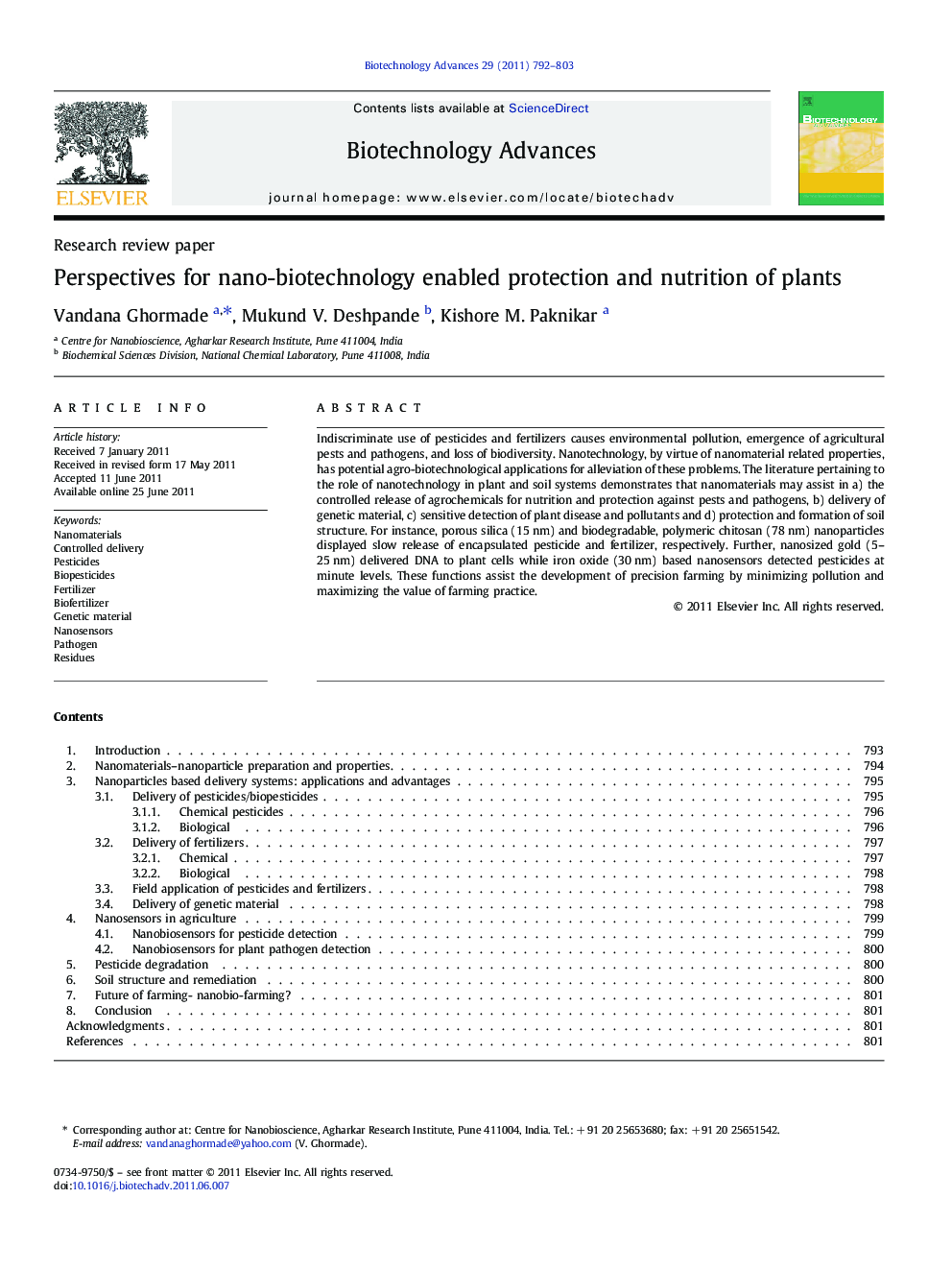| Article ID | Journal | Published Year | Pages | File Type |
|---|---|---|---|---|
| 10231668 | Biotechnology Advances | 2011 | 12 Pages |
Abstract
Indiscriminate use of pesticides and fertilizers causes environmental pollution, emergence of agricultural pests and pathogens, and loss of biodiversity. Nanotechnology, by virtue of nanomaterial related properties, has potential agro-biotechnological applications for alleviation of these problems. The literature pertaining to the role of nanotechnology in plant and soil systems demonstrates that nanomaterials may assist in a) the controlled release of agrochemicals for nutrition and protection against pests and pathogens, b) delivery of genetic material, c) sensitive detection of plant disease and pollutants and d) protection and formation of soil structure. For instance, porous silica (15Â nm) and biodegradable, polymeric chitosan (78Â nm) nanoparticles displayed slow release of encapsulated pesticide and fertilizer, respectively. Further, nanosized gold (5-25Â nm) delivered DNA to plant cells while iron oxide (30Â nm) based nanosensors detected pesticides at minute levels. These functions assist the development of precision farming by minimizing pollution and maximizing the value of farming practice.
Keywords
Related Topics
Physical Sciences and Engineering
Chemical Engineering
Bioengineering
Authors
Vandana Ghormade, Mukund V. Deshpande, Kishore M. Paknikar,
